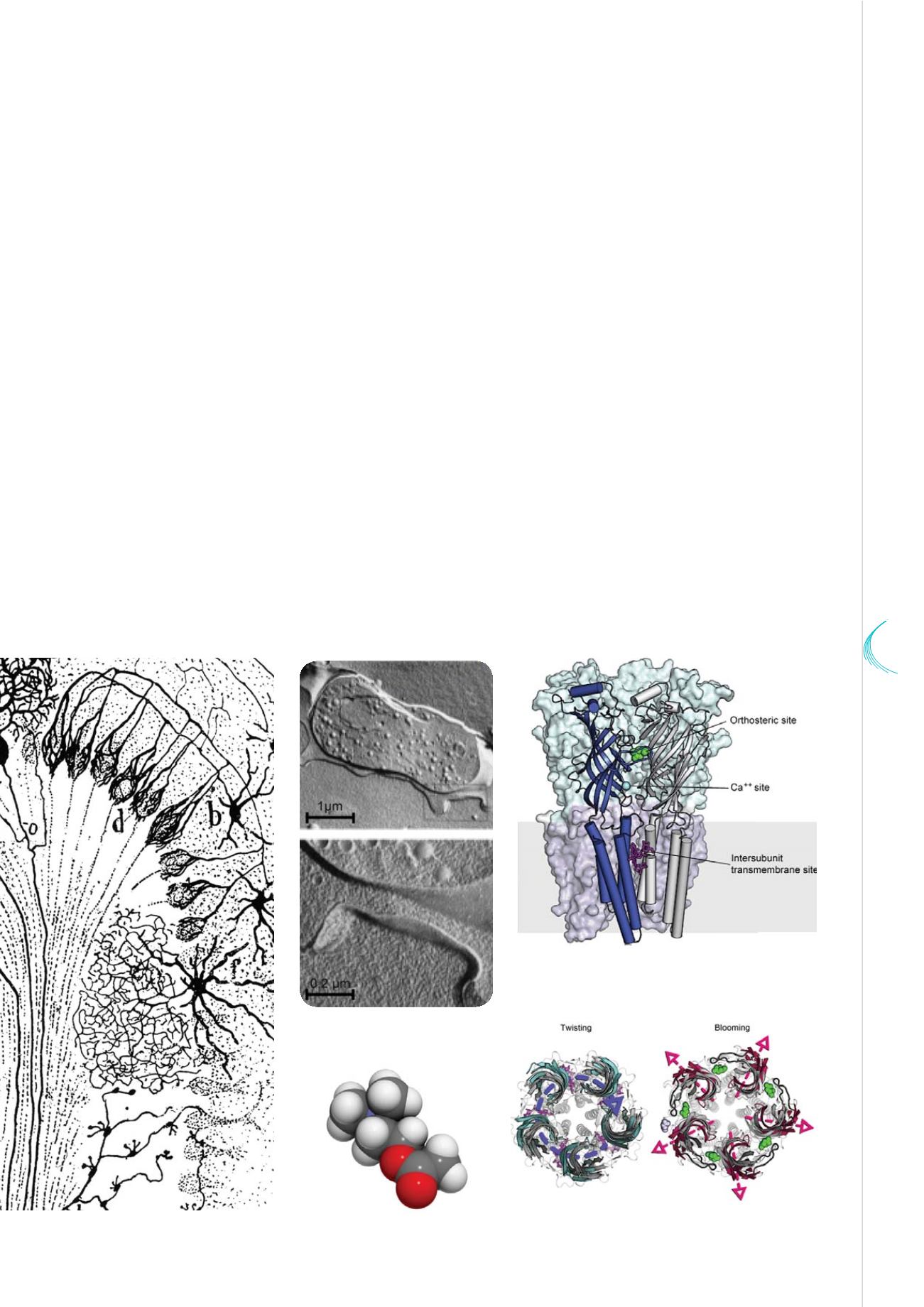

350
YEARS
OF
SCIENCE
37
The basic components of the brain: the nervous cell, synapse and molecule of the acetylcholine neurotransmitter with its
receptor
Neuron (Santiago Ramon y Cajal, 1894)
Neurotransmitter as a chemical signal
© Granger Historical Picture Archve - Alamy
© Jean Cartaud
© molekuul.be
Acetylcholine
0,1 millimeter
micrometer
nanometer
Allosteric transitition of a receptor like
the acetylcholine receptor
© M. Ceccini et J.-P. Changeux, 2015, Neuropharmacology 96 (2015) 137e149
Fine structure (atomic resolution) of a neurotransmitter receptor
like the nicotinic acetylcholine receptor
© Granger Historical Picture Archve - Alamy
origin of many diseases in humankind. Besides, it is a fact that all the genes of our chromosomes do not express
themselves at the same time during development. Tallying with the masterful demonstration Jacob and Monod
made in 1961, specialized gene sequences, called "regulatory
"
sequences, control the diversification of cell
lineages in the organism, and notably that of the nervous cell, the neuron.
The neuron appeared very early in the course of evolution, with the hydra and jellyfish. It ensures fast
communication and coordination between the different parts of the organism. It individualises itself by the many
prolongations, axon and dendrites, that come into contact with hundreds and sometimes tens of thousands
of other cells. As Ramon y Cajal already suggested in 1890, neurons form discontinuous networks in which
the membranes of the nervous cells are juxtaposed at synapses. Remarkably enough, the main anatomic and
physiological features of the nerve cell are kept from the primitive species to human beings. Axons propagate
electric signals that are entirely reducible to the transport of electrically-charged ions. At the synapse, chemical
signals – neurotransmitters – take over, spread in the synaptic space and bind to receptors. As they convert
chemical signals into electrical signals, receptors are part of the allosteric switches mentioned above. Already
present in bacteria, these receptors impose irreducible constraints on the information processing performed by
our brains. They are also the targets of many drugs. Our nervous systems are, as the rest of our organisms,
vast physicochemical systems whose constituent parts have little changed in the course of evolution. What has
changed is the organization.


















